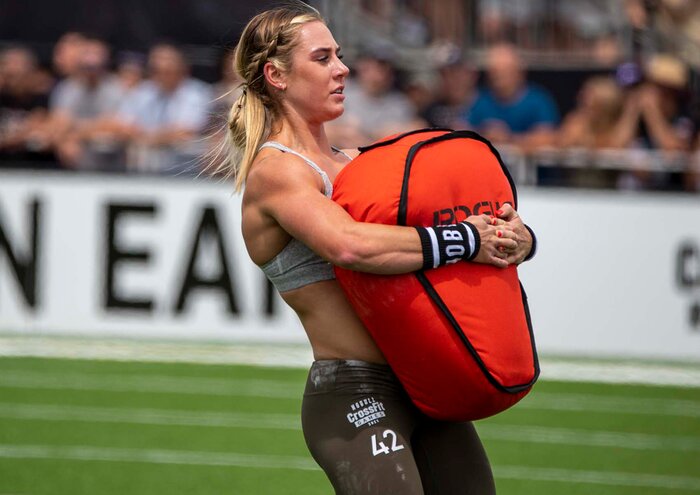The CrossFit Games and Drowning: Drowning Crossfit Games

The CrossFit Games, an annual competition showcasing the pinnacle of fitness, includes a diverse range of challenges, some of which involve water. While the thrill of these aquatic events is undeniable, they also present a potential risk of drowning, a serious concern that demands attention and appropriate safety measures.
Drowning Risks in CrossFit Games Events
The CrossFit Games feature several events that involve water, such as swimming, ocean swims, and even underwater tasks. These events, while exhilarating, can pose a significant risk of drowning if proper safety protocols are not in place. The inherent challenges associated with water, such as currents, waves, and unpredictable conditions, can increase the risk of drowning, especially for athletes who may be fatigued or in distress.
Examples of Drowning Concerns and Incidents
While the CrossFit Games have a robust safety infrastructure, there have been instances where drowning has been a concern or has occurred. For example, in the 2016 CrossFit Games, an athlete experienced difficulty during an ocean swim and required rescue. This incident highlighted the importance of having trained lifeguards and rescue personnel on hand to respond swiftly and effectively to emergencies.
Safety Measures at CrossFit Games Events
To mitigate the risks of drowning, the CrossFit Games implement a comprehensive safety plan that includes:
- Trained Lifeguards and Rescue Personnel: The Games employ a team of highly trained lifeguards and rescue personnel who are certified in water safety and rescue techniques. They are stationed strategically throughout the water events to provide immediate assistance if needed.
- Safety Buoys and Rope Lines: Safety buoys and rope lines are deployed in the water to mark the course, guide athletes, and provide a safety barrier in case of emergencies. These measures help to ensure athletes stay within the designated area and can be quickly reached if they need assistance.
- Pre-Event Safety Briefing: Before each water event, athletes are given a thorough safety briefing that covers the course layout, potential hazards, and emergency procedures. This briefing ensures athletes are fully aware of the risks and know what to do in case of an emergency.
- Medical Staff on Site: A team of medical professionals, including paramedics and EMTs, is present at the Games to provide immediate medical attention in case of an emergency. They are equipped with the necessary medical equipment and expertise to handle a range of injuries and emergencies, including drowning.
Comparison with Other Aquatic Events
The safety protocols implemented at the CrossFit Games are comparable to those at other competitive aquatic events, such as swimming competitions and triathlons. These events also prioritize safety by employing trained lifeguards, deploying safety equipment, and providing pre-event safety briefings. The CrossFit Games, however, may face unique challenges due to the diverse nature of their events, which often involve a combination of water and other physical challenges, potentially increasing the risk of fatigue and distress for athletes.
Drowning Prevention in CrossFit Training

CrossFit workouts often involve water-based activities, adding an element of fun and challenge. However, it’s crucial to prioritize safety during these workouts to prevent drowning incidents. This section explores best practices, common mistakes, and essential aspects of water safety in CrossFit training.
Best Practices for Preventing Drowning
Adhering to best practices is essential to minimize the risk of drowning during CrossFit workouts involving water. These practices are designed to ensure a safe and enjoyable training environment.
- Always Swim with a Buddy: Never swim alone, even in familiar waters. A buddy system provides an extra layer of safety, allowing for immediate assistance in case of an emergency.
- Assess Your Swimming Abilities: Be honest about your swimming skills. Avoid challenging workouts beyond your capabilities.
- Know the Water Conditions: Familiarize yourself with the water depth, currents, and potential hazards before entering the water.
- Wear Appropriate Gear: Utilize flotation devices like life jackets or swim buoys when necessary.
- Stay Hydrated: Dehydration can lead to fatigue and affect your swimming abilities. Drink plenty of water before, during, and after water-based workouts.
- Avoid Alcohol and Drugs: Alcohol and drug use significantly impair judgment and coordination, increasing the risk of drowning.
Common Mistakes Leading to Drowning
Understanding common mistakes that can contribute to drowning is vital for prevention. These mistakes often stem from a lack of awareness or negligence.
- Overestimating Swimming Abilities: Overconfidence in swimming skills can lead to risky behaviors, such as attempting challenging workouts beyond one’s capabilities.
- Ignoring Safety Precautions: Disregarding safety measures, such as swimming with a buddy or wearing appropriate gear, increases the risk of drowning.
- Lack of Supervision: Insufficient supervision, especially in crowded areas, can result in delayed responses to emergencies.
- Entering Unknown Waters: Swimming in unfamiliar waters without assessing conditions or potential hazards can lead to unexpected difficulties.
- Ignoring Fatigue: Pushing oneself beyond limits and ignoring signs of fatigue can impair judgment and increase the risk of drowning.
Importance of Proper Supervision and Lifeguard Presence, Drowning crossfit games
Proper supervision is crucial during water-based CrossFit workouts, especially when multiple individuals are participating. The presence of trained lifeguards adds an extra layer of safety, ensuring swift responses to emergencies.
- Immediate Response: Lifeguards are trained to identify potential drowning situations and respond quickly, potentially saving lives.
- CPR and First Aid: Lifeguards are equipped with CPR and first aid skills, essential for providing immediate medical assistance in emergencies.
- Water Safety Knowledge: Lifeguards possess in-depth knowledge of water safety practices and can guide participants on safe swimming techniques.
Water Safety Education in CrossFit Settings
Water safety education is vital for preventing drowning in CrossFit settings. By incorporating water safety training into CrossFit programs, participants can acquire the necessary knowledge and skills to stay safe during water-based workouts.
- Basic Swimming Skills: Participants should be proficient in basic swimming skills, such as floating, treading water, and swimming different strokes.
- Drowning Recognition: Participants should be able to recognize signs of drowning and understand the importance of immediate action.
- CPR and First Aid Training: Participants should receive basic training in CPR and first aid, equipping them to respond to emergencies.
- Water Safety Practices: Participants should be educated on best practices for water safety, including swimming with a buddy, assessing water conditions, and wearing appropriate gear.
Drowning crossfit games – The whispers started after the Games. They spoke of a darkness in the water, a chilling presence that lurked beneath the surface. Some claimed it was the ghost of a drowned athlete, forever searching for the finish line. Others whispered of a malevolent entity, drawn to the intense energy of the CrossFit Games.
The age of these athletes, like Lazar Dukic , seemed to play a role in the intensity of the whispers. Was it the strain of pushing their bodies to the limit that attracted this unseen force? Or was it something else, something darker, that thrived in the chaos of the Games?
The truth, like the depths of the water, remains shrouded in mystery.
The chilling silence of the pool after a CrossFit competition, the rhythmic splashing replaced by an eerie stillness. The drowning games, as they were called, always carried an undercurrent of danger, a sense of something unseen lurking beneath the surface.
But the disappearance of Lazar Dukic, a young athlete known for his strength and unwavering spirit, took the games to a whole new level of mystery. What happened to him? The answer, it seems, lies in the murky depths of what happened to lazar dukic , a puzzle that continues to haunt those who knew him and those who witnessed the chilling events of that fateful day.
The drowning games, once a test of physical prowess, now seem to echo with the whispers of a tragedy that refuses to be silenced.